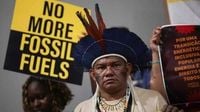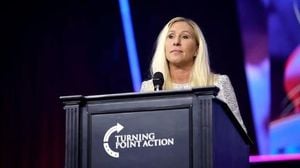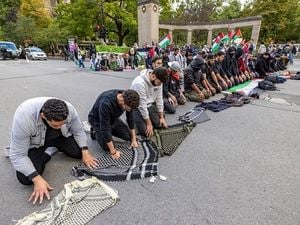When nearly 200 nations converged on Belém, Brazil, in November 2025 for the COP30 climate summit, expectations ran high. Set amid the lush Amazon rainforest, the summit’s location was a powerful symbol—a reminder of what’s at stake as the world wrestles with climate change. Delegates arrived with hopes for a breakthrough, but as the days wore on, it became clear that the world’s climate diplomacy is at a crossroads.
The centerpiece of COP30 was the so-called Belém Package, a collection of decisions that, on paper, marked progress. According to JURIST, the summit’s closing plenary on November 23 saw nearly 200 countries endorse this package, which calls for tripling financial support to help vulnerable nations adapt to intensifying climate impacts. This move elevates adaptation and resilience as core pillars of the United Nations Framework Convention on Climate Change (UNFCCC) process, referencing the Global Goal on Adaptation first outlined in the 2015 Paris Agreement.
But while the promise of more money for adaptation—flood defenses, heat shelters, drought monitoring—was widely welcomed, the summit fell short on its most contentious issue: fossil fuels. Despite pressure from a large coalition of states and civil society groups, efforts to secure a negotiated roadmap away from coal, oil, and gas collapsed. The final agreement omitted any explicit commitment to “transition away from” or “phase out” fossil fuels. As The Financial Times reported, this omission triggered immediate criticism from key figures, with EU climate commissioner Wopke Hoekstra declaring the draft “unacceptable” and warning that the talks risked ending without a deal at all.
The divisions ran deep. Major oil-producing countries, including Russia and Saudi Arabia, as well as several emerging economies such as India, resisted any binding language on fossil fuels. France’s ecological transition minister Monique Barbut pointed to these nations as blocking progress. Meanwhile, some officials defended the omission, arguing that developing countries must balance climate goals with energy security and jobs dependent on fossil fuel industries. As South Asia’s special envoy Arunabha Ghosh put it, “We must balance climate ambition with the realities our people face.”
Outside the negotiation halls, frustration mounted. Climate activists and Indigenous groups intensified calls for stronger action on fossil fuels—the world’s largest source of greenhouse gas emissions. Youth groups and Indigenous leaders welcomed the adaptation funding pledge but described the absence of a fossil fuel roadmap as a “failure of courage.” The sense of urgency was palpable, especially for small island states and climate-vulnerable communities. These groups argued that a finance-heavy deal without a concrete plan to exit fossil fuels jeopardizes the Paris Agreement’s 1.5°C temperature limit.
UN Secretary-General António Guterres delivered perhaps the summit’s sharpest warning. He called the failure to keep the 1.5°C goal alive a “moral failure” and “deadly negligence,” criticizing fossil fuel interests for slowing progress. “Governments are prioritizing corporate profits over the planet’s survival,” Guterres said, urging negotiators to remember that climate diplomacy is about fairness, responsibility, and survival—not just numbers on a spreadsheet.
The absence of the United States also cast a long shadow over COP30. President Donald Trump declined to attend, and the U.S. did not participate as a full Paris Agreement party, reducing the summit’s ambitions and complicating the search for consensus. As Ramesh Jaura noted in IDN-InDepthNews, the lack of U.S. engagement left a leadership vacuum and emboldened those opposed to rapid fossil fuel phaseouts.
Despite these setbacks, COP30 did yield some meaningful advances beyond adaptation funding. The summit launched the Tropical Forest Forever Facility, aiming to raise billions for forest protection, and made a major push to secure land rights for Indigenous communities—proven safeguards against deforestation. The Belém Health Action Plan, another first, linked climate adaptation directly to public health, recognizing that climate change is as much about human well-being as it is about carbon emissions.
Negotiators also agreed on global adaptation indicators, a move toward accountability. Supporters saw this as a step forward, but critics dismissed it as “spreadsheet diplomacy”—a technical fix that papers over deeper political failures. The summit’s progress on carbon markets was similarly mixed: while some technical hurdles were cleared, developing countries remained wary that such markets could allow wealthy nations to offset emissions rather than actually reduce them.
Yet the most telling outcome of COP30 was what it failed to deliver. There was no commitment to phase out fossil fuels, no end-date for coal, no limits on new oil and gas, and only non-binding support for renewables. For a conference held in the world’s greatest carbon sink, this omission felt especially stark. As one negotiator quipped, “It’s like we’re rearranging the furniture while the house burns.”
The underlying reasons for this stalemate are structural. The Paris Agreement, for all its ambition, relies on voluntary national pledges. There are no enforcement mechanisms, and consensus paralysis means that a few countries can weaken even the strongest proposals. Chronic underfunding for adaptation, loss and damage, and clean energy remains a persistent problem, especially for the world’s poorest nations. As IDN-InDepthNews observed, “The needs grow faster than the finances.”
Still, the COP process remains the only global platform where more than 190 countries negotiate for the planet’s future. It amplifies the voices of small island states, Indigenous peoples, and youth activists—groups that might otherwise be sidelined. And while progress inside the official process is slow, many breakthroughs—from methane agreements to forest pledges—happen on the sidelines, outside the formal negotiations.
Beneath the surface, COP30 revealed a shift in climate talks from a narrow focus on emissions toward broader issues: energy security, public health, Indigenous rights, food systems, and investment flows. These are complex, deeply political topics that cannot be ignored. The summit also highlighted the growing fragmentation of climate authority, with key decisions increasingly made by the G20, the IMF and World Bank, regional blocs like BRICS, and even the courts.
For many, the lack of sufficient adaptation funding and unclear promises to cut emissions have deepened mistrust—especially among vulnerable countries. As Brazil’s President Luiz Inácio Lula da Silva said in his opening speech, the credibility of COP30 depends on whether promises made in Belém are translated into enforceable laws and budgets back home. “The world is watching what we do next,” Lula warned.
As the dust settles, the legacy of COP30 may be its demonstration that the current system is struggling to deliver the changes science demands. The process is both essential and insufficient. It cannot close the emissions gap or halt fossil fuel use on its own. But without it, there would be no global pressure, no shared direction, and no platform for the world’s most vulnerable to demand justice.
The path ahead is narrowing, but it’s not closed. Real progress will require political courage that can’t be negotiated in conference halls alone. The future of climate diplomacy—and the planet—now depends on what countries do when they return home, not just on what they promise in Belém.





